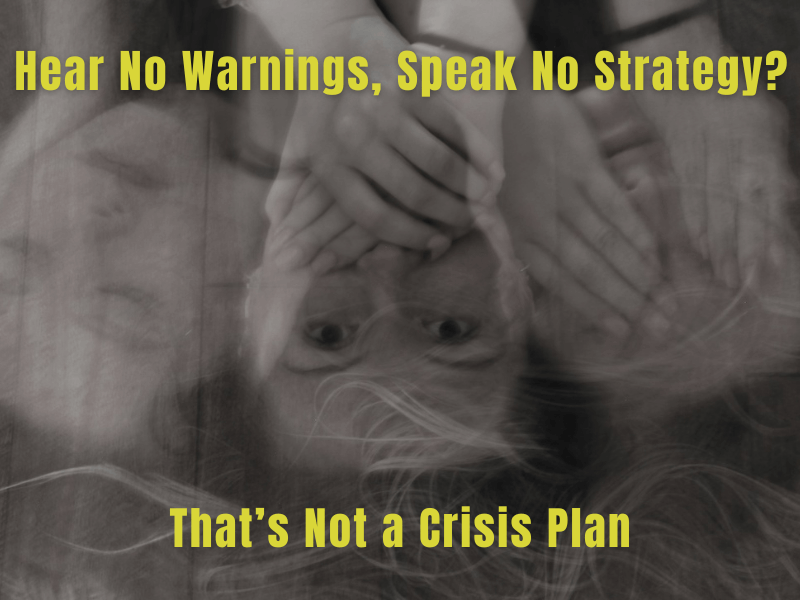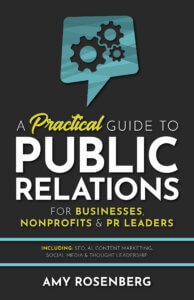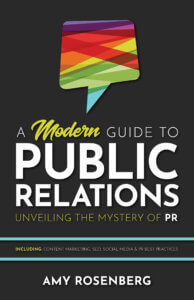Most organizations think of crisis communication as something reactive — a scramble to contain bad press or clarify a mistake after the fact. But what if your crisis plan could do more than protect your reputation? What if it could actively generate goodwill, test messaging and even fill the content void that so many organizations struggle with?
Proactive crisis communication isn’t just about damage control. When done right, it’s a powerful way to create meaningful, pre-approved content that builds trust long before anything goes wrong.
This post is part one of a two-part series on crisis communication. Here, we focus on what to do before something goes wrong — how to prepare in advance so you have structure and clarity when a crisis hits. A follow-up post on how to respond in the moment (when the crisis is already unfolding) is coming soon.
Let’s walk through how to do it, starting with the prep work that lays the foundation.
Start with the Real Work: Your Crisis Prep Foundation
Before you can spin gold from your crisis plan, you have to build the structure. This means blocking off calendar time and digging deep into the potential crises your organization may face. Start by:
1. Listing Every Plausible Scenario
From fires and cybersecurity breaches to harassment complaints and legislative changes, outline every issue that could realistically arise. Prioritize them, then commit to tackling one scenario at a time — monthly or every other month.
2. Holding Stakeholder Conversations
When the time comes to work ahead on a specific scenario, gather relevant staff, leaders and partners to answer:
- What will be done during the scenario to mitigate damage?
- What will be done after the scenario to remedy it?
- Most importantly: What’s being done now to prevent it?
These meetings surface essential insights and clarify the who-does-what breakdown. That information becomes the backbone of your communication plan.
3. Creating Response Trees
Map out who will speak to each audience — such as media, staff, customers or partners. Assign backups in case someone is unavailable.
4. Writing Sample Statements
This is where it gets real. Draft:
- Internal staff communications
- Customer/member/partner emails
- Media statements
Make it clear to your team — often and explicitly — that you likely won’t release this media statement or any for that matter. You’re drafting the statement now so you’re ready in case it’s ever needed. But when the crisis hits, you’ll revisit the statement and possibly never even release it, depending on how everything unfolds. This reassurance helps reduce pushback and keeps stakeholders aligned with the plan.
In the statements, leave blanks for names, dates or other details, but write them in a tone and style your organization can stand behind. If a crisis hits and your executive director is out of the country, you’ll be glad these were written, vetted and ready to go.
5. Securing Approvals and Setting Review Cycles
Walk your sample statements through leadership, legal and subject matter experts. Remind everyone that these are living documents and will be reviewed yearly (or more frequently if your team changes) before being released.
With statements for every plausible scenario in place, you’re not just prepared. You’re ready to repurpose that work.
Case Study: Turning Crisis Prep Into Proactive Content
A 120-year-old Oregon manufacturing firm came calling after being placed on a public list by the Department of Environmental Quality (DEQ), flagged for air quality review under the new Cleaner Air Oregon (CAO) initiative.
We approached the prep seriously and methodically — asking our usual questions and identifying the right stakeholders. But in the back of our minds, we were also thinking: can this become content? If we’re doing the work anyway, can we use it to show — not just tell — the public what this company stands for?
The optics weren’t great. Despite being a long-time community employer with excellent wages and benefits, they knew the scrutiny would raise eyebrows. The process to meet new emissions standards would take years.
Instead of waiting for protestors to show up or a negative headline to drop, we began a proactive content campaign, rooted in the crisis prep process:
We started by interviewing engineers, HR reps, and frontline workers to better understand the company’s culture, safety measures, and environmental practices.
Then we created content. Month by month, we rolled out:
- Blog posts on employee benefits and safety protections
- Social posts highlighting union support and retirement packages
- Stories about their recycling initiatives and wetlands conservation
By the time we approached the topic of emissions directly, the community already had context. Readers understood the company’s values, their role in the town and their long-standing commitments to worker well-being.
We got approval along the way. Blog posts weren’t just fluff — they were reviewed by scientists, engineers and the CEO. That meant when we needed a statement, we had approved copy ready to go.
We even pre-negotiated a content rule: If the CEO was unavailable in a crisis, we could pull lines directly from the blog posts for media statements or talking points.
The protest we anticipated never materialized. While we can’t know for sure if the content prevented it, the company was eventually sold — possibly helped by the goodwill and clarity we’d built through our content.
Why This Approach Works
Using crisis prep as a content strategy delivers value whether or not a crisis ever comes:
- Builds Trust in Advance: Community members and media see you as transparent, not defensive.
- Strengthens Internal Alignment: Spokespeople get comfortable with the messaging long before they need it.
- Creates Reusable Language: You have pre-approved copy to pull from under pressure.
- Fills the Content Void: It provides a steady flow of relevant, values-driven content in between announcements or campaigns.
- Reduces Panic: Your team knows what to say and when, giving everyone peace of mind.
You don’t need to wait for a DEQ call-in or a cyber breach to start. Choose a scenario, schedule a stakeholder meeting, and just begin.
Preparation Isn’t Just Protection — It’s Promotion
Too many crisis plans sit idle, gathering dust in some forgotten folder. But if you treat the process as an opportunity to listen deeply, clarify your values and tell your story early, you can create content that strengthens your organization long before anyone is looking for answers.
Start with the preparation steps, and let them evolve into something more. Because when done right, proactive crisis communication doesn’t just mitigate damage — it fills the void with clarity, leadership and trust.
And if the crisis does hit — especially in a way you didn’t expect — don’t worry. The second post in this two-part series — coming soon — will walk you through how to respond in the moment, even if you’re reacting under pressure.
Want more proven strategies like this?
You’ll find more in my book, A Practical Guide to Public Relations for Nonprofits, Businesses and PR Leaders.
**Please note that Veracity does not accept clients that are currently under active crisis. We only work with clients that are planning ahead for a change that could unfold into a crisis, such as a sale, management transition or legislation. If a retainer client experiences an unplanned crisis, we are already a member of the team and ready to stand in their corner.**









